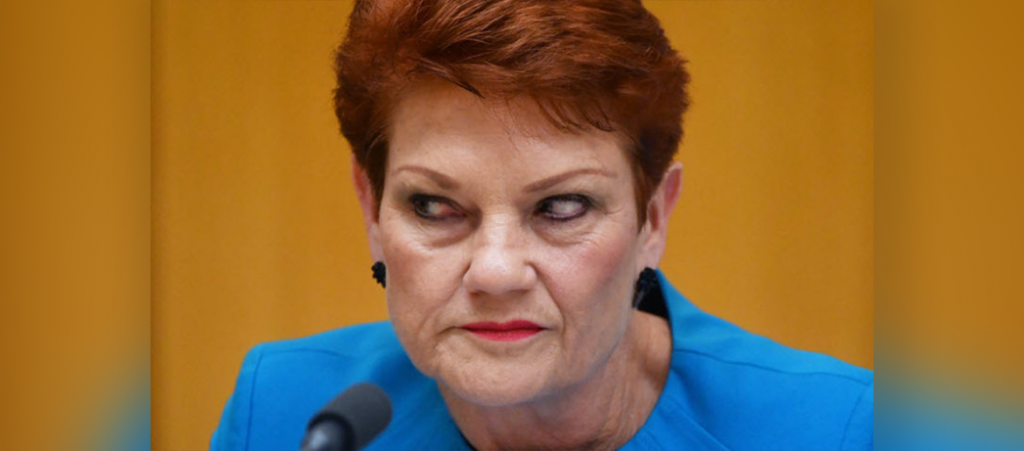
The Australian government has taken ‘action’ on Critical Race Theory, a theory mostly discussed in the US, seemingly out of nowhere. On the 21st June, One Nation leader Pauline Hanson raised a motion in the Senate to “reject critical race theory (CRT) from the national educational curriculum” – and with the support of the Coalition government, her motion passed. But what even is critical race theory, and why does Hanson care about it?
Take a deep breath, here we go…
What is Critical Race Theory?
Critical race theory is an academic concept established in the late 70s and early 80s in the US. It’s essentially a way of thinking about systemic racism, particularly anti-Black racism. The central ideas of CRT are:
- Race is a social construct. This basically means that we have created racial categories and decided who falls into them. There are no substantial genetic differences between races, especially when compared to the wide range of genetic differences that exist across the entire human race regardless of race.
- Racism is created and supported by legal systems and policies. It’s less to do with the individual bias that one person may hold, but more to do with the legal, social and cultural structures that create very different experiences for different racial groups.
CRT was developed by legal scholars including Derrick Bell, Richard Delgado and Kimberlé Crenshaw – whose name you may recognise as the woman who coined the term “intersectionality” in 1989.
Racism is a systemic, structural issue, so CRT is a way of understanding how racial biases are embedded into those systems. It puts more emphasis on the outcome of a law (or other institutional structure) to evaluate whether or not it is ‘racist’, rather than the intention of the law.
For example, a new law about homeownership may not explicitly mention anything to do with racial identification at all… but if the result of law makes it disproportionately harder for First Nations people to buy a home, under CRT we would consider it to be racial discrimination.
And it is, ultimately, just a theory – a lens for critical thinking and re-evaluating how we view our world in the hopes of improving it, just like any other political or philosophical theory.
Anyway here’s an old write up from me on what critical race theory actually is and why it’s really not that scary https://t.co/10dRYK3Gz2 pic.twitter.com/2hpcas0yp7
— Kishor (@kishor_nr) June 21, 2021
Does it apply in Australia?
CRT is a theory that can be applied to any Western society – so while it’s discussed and debated more widely in the US, it works in the Australian context too.
Do our systems and structures create and/or reinforce disadvantages to First Nations and other non-white Australians? Well, yeah.
What is Hanson’s CRT motion really about?
Senator Hanson’s motion asked “that the Senate calls on the Federal Government to ban critical race theory from the national curriculum.”
It’s kinda weird (by normal standards, not hers), because no one is proposing that CRT be included in the national curriculum. While proposed changes to the curriculum for 2022 include a greater focus on Indigenous perspectives of Australia’s colonisation, they relate to history and not current structures – therefore not really representing the focus of critical race theory.
But highly contested debates about CRT are being had in the US, where many states are introducing or trying to introduce laws to ban the way American history and social studies are taught in schools. Some of these bills go as far as banning public schools for talking about whether the United States’ “meritocracy” is racist or sexist.
Conservatives like Hanson are picking these ideas up and attempting to introduce them to Australian discussion and politics. As reported by Crikey, Sky News Australia runs lots of news stories about the US controversies tied to critical race theory – despite being an Australian media outlet.
Pauline Hanson is moving a motion today about rejecting critical race theory in the national curriculum. This is the first time it has ever been mentioned in the Senate. Where on earth did this come from!? Oh… pic.twitter.com/exDSU1CWJX
— Mehreen Faruqi (@MehreenFaruqi) June 21, 2021
Does this motion have any real impact?
No, but yes.
First, we need to know what a “motion” is. It is essentially the proposal of an idea – usually proposing a change to a Bill, but a motion can also be used to state an opinion or stance. They can be introduced in the House of Representatives or the Senate. Once a motion is introduced there is an opportunity to debate it, and then everybody votes to either support or oppose it.
If the motion is simply the statement of an opinion – as Hanson’s is in this case – nothing has to happen. A vote to support or oppose just signals whether the Government agrees or disagrees with the opinion, with no obligation to do anything more about it.
So no, Hanson’s motion doesn’t have any tangible, practical impact. It does not propose or change any laws.
But the fact that Coalition Senators supported her motion reveals what the Government thinks about the idea of systemic racism. They refuse to believe that it exists – a shameful fact in one of the world’s most multicultural nations. It does have a real-world impact, as a belief that informs how they create, enforce and interpret the laws that govern us all.




